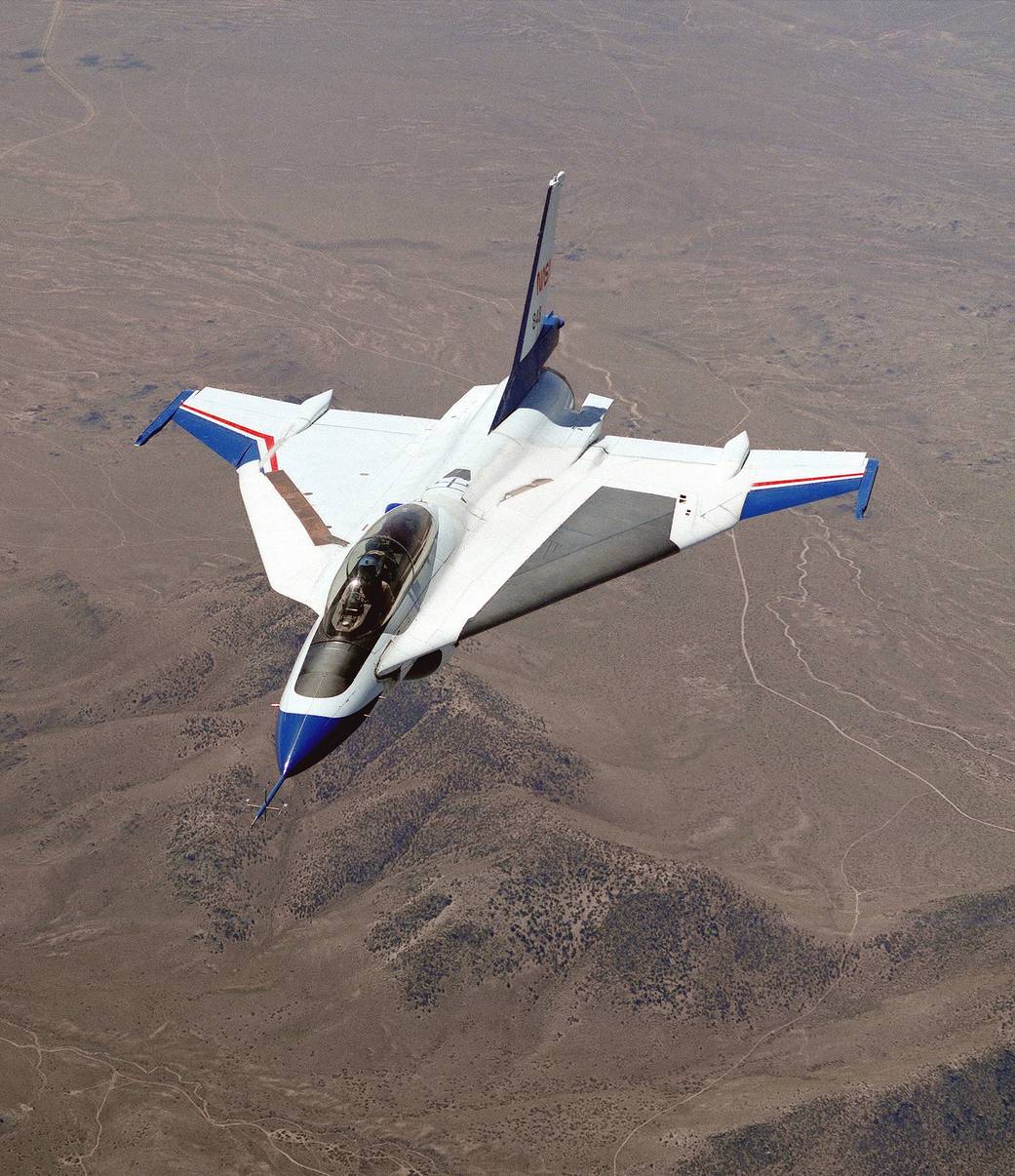EC96-43548-8
During an April 18, 1996, flight research mission, NASA Dryden Flight Research Center’s modified F-16XL #2 conducted testing on laminar flow. The research being conducted involved a delta-winged F-16XL modified with a “glove” made of titanium. The glove contained more than 10 million holes and had a suction system attached to the lower surface which was comprised of tubes, valves, and a compressor. During research flight the suction systems pulled a small part of the boundary layer of air through the glove’s porous surface to create laminar (or smooth) air flow.
Researchers believe that laminar flow conditions can reduce aerodynamic drag (friction) and contribute to reduced operating costs by improving fuel consumption and lowering aircraft weight.
This Supersonic Laminar Flow Control (SLFC) experiment represented a collaborative effort between NASA and aerospace industry (specifically Boeing, Rockwell, and McDonnell Douglas), with Boeing assembling the panel and McDonnell Douglas designing the suction system.Apr. 1996NASA Photo› F-16XL-2 Project Description
1 min read




























